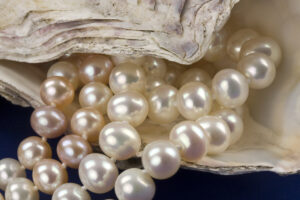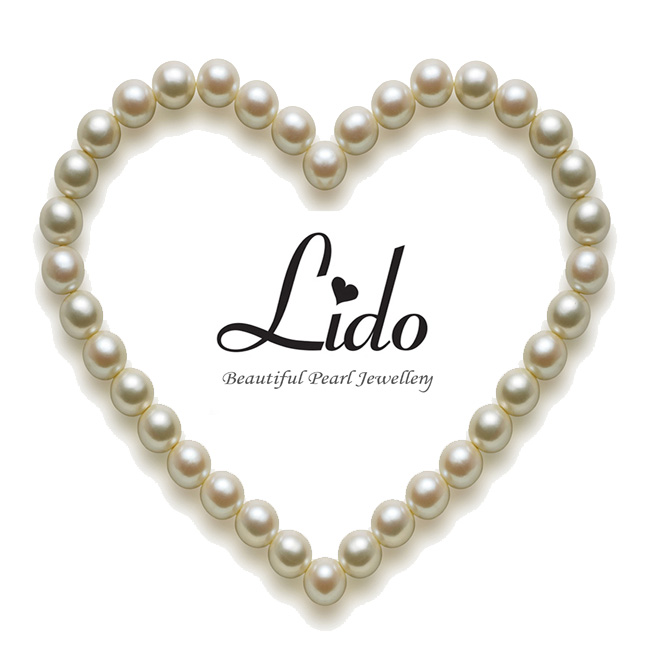“Pearls have been symbols of love, happiness and good fortune for centuries”
Both natural and cultured pearls form when an irritant is embedded in an oyster, clam or mollusc. Prior to the late nineteenth century, all pearl jewellery was made from natural pearls. In 1893 the era of pearl farming was born when Kokichi Mikimoto was first able to induce pearl growth by manually implanting the irritant into the oysters. This first success was a single semi-round pearl.

Types Of Pearls
Primarily cultivated in Japan and China, these saltwater pearls typically range in size from 6 to 8 millimeters, they can however be grown as small as 2mm or as large as 10mm. Most pearls are white to cream but they can naturally occur in yellow, grey and blue. The Akoya pearl generally takes 6 to 18 months to form.
These saltwater pearls are larger in size than the Akoya, typically 8mm to 18mm and range in colour from white to golden. They are farmed principally in Australia, Indonesia and the Philippines and generally take 24 months to produce the pearl.
Along with the South Sea pearl, the Tahitian pearl is one of the most prized in the pearl family. They range in colour from white to black to other colours including green and purple. The average size is from 8mm to 14mm. It takes approximately 18 to 20 months to produce a Tahitian pearl.
Today’s freshwater pearls bear little resemblance to the freshwater pearls of a decade ago. The Chinese have developed a pearl that rivals the Akoya pearl. The sizes range from 2mm to 12mm. The freshwater pearl also comes in various other shapes and sizes. The primary sources for freshwater pearls are China and the United States. They are cultured in both saltwater and freshwater. They can take between 1-6 years to grow.
Mabe pearls are blister pearls that have been filled with epoxy resin and glued to a mother-of-pearl backing
Pearl Values
Pearl sizes are stated in millimeters. For round pearls this indicates the diameter of the pearl. If it is another shape such as teardrop then the length, width and depth are usually given.
There are three basic shape categories for pearls: Spherical – round or near round, Symmetrical – drop, oval or button, Baroque – which refers to any oddly shaped pearl. Round pearls typically command a higher price.
Pearls come in many colours, white, cream, pale peach & shades of pink are the most common natural colours. Many other colours are available by using various methods of dying & irradiation.
Lustre is defined by the light reflections from the surface of the pearl. The more lustrous a pearl the more valuable and beautiful it is.
Since pearls are a naturally grown gemstone, no two are alike. Natural conditions such as water temperature and pollution impact the smoothness of the surface of the pearl. Some blemishes affect a pearl’s appearance & value.
Nacre is the surface layer of the pearl. It is the result of the oyster coating the irritant with a substance that hardens and thickens with each layer. The deeper the layers or nacre, the more lustrous and durable the pearl.
Matching refers to the uniformity of appearance of the pearls in a piece of jewellery or strand. The more closely matched the pearls, the more pearls had to be sorted through, and therefore the more expensive the item.
Protection & Care Of Pearls

